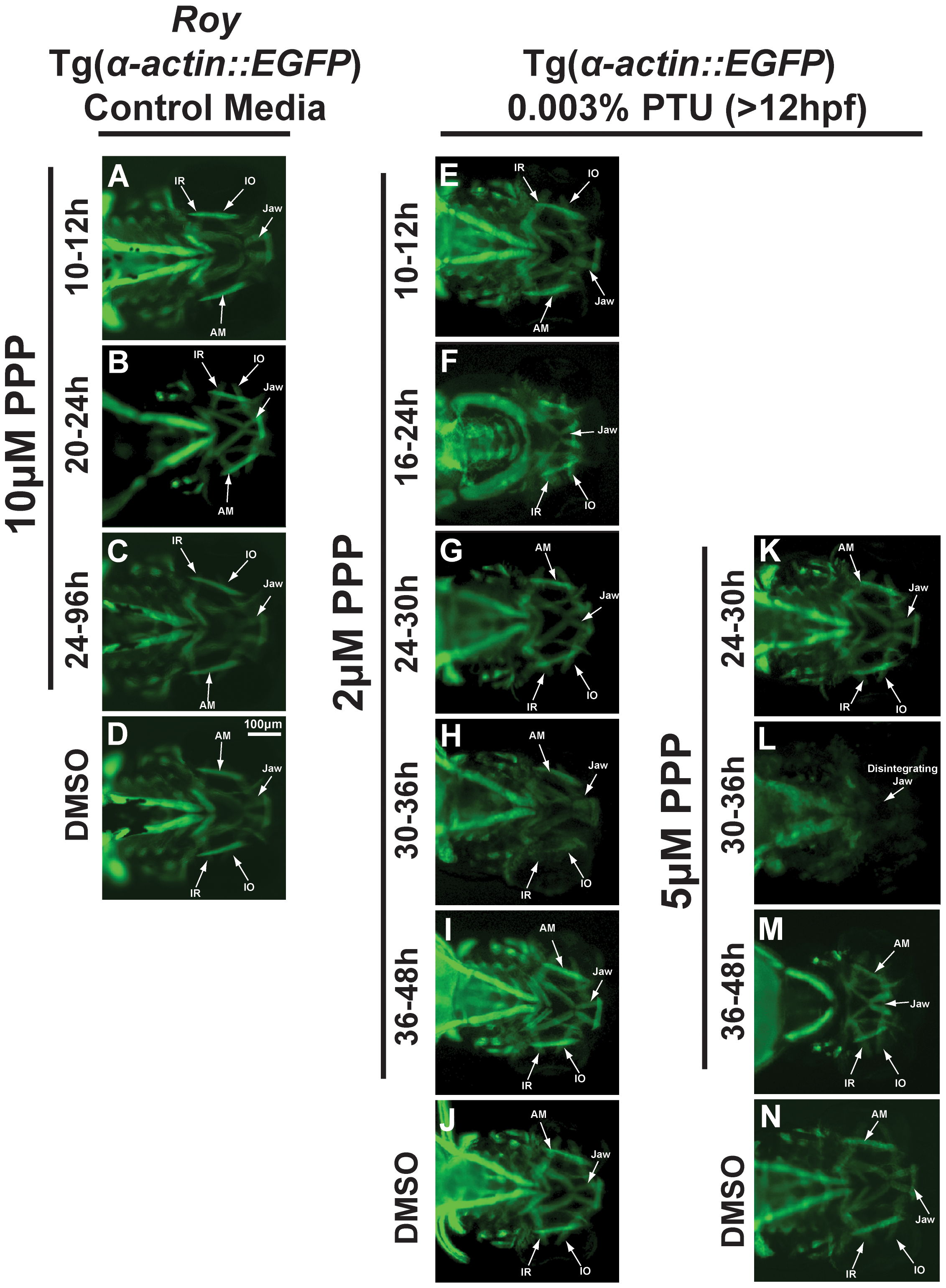Fig. 4
Craniofacial development is sensitive to IGF signaling and PTU during different time frames.
72 hpf Tg(α-actin::EGFP) embryos were treated with the tyrosine kinase receptor inhibitor, picropodophyllin (PPP; 2–10 μM) at different times in the roy background (in the absence of PTU; A–D) or in the presence of 0.003% PTU added at 12 hpf (E–K). Treatment with PPP between 10–12 hours had minimal effect on craniofacial development (A, E) regardless of treatment with 0.003% PTU. In the roy background and in the absence of PTU, treatment with 10 μM PPP between 20 and 24 hpf (B), or 24 and 96 hpf (C) did not affect craniofacial development compared to 0.1% DMSO control (D). Treatment with 2 μM PPP between 16 and 24 hpf in the presence of 0.003% PTU caused craniofacial maldevelopment and thickening of extraocular muscles (F) compared to 0.1% DMSO control (J). Treatment with 2 μM or 5 μM PPP between 24 and 30 hpf caused mild delay of jaw development in the presence of PTU (G). Treatment with 2 μM PPP between 30 and 36 (H) or 36 and 48 (I) hpf did not affect craniofacial development. Treatment with 5 μM PPP between 30 and 36 hpf in the presence of PTU caused poor adherence of the jaw (G) and dissolution of muscle structure after tissue manipulation (L) compared to 0.1% DMSO control (N). Treatment with 5 μM PPP from 36 to 48 hpf caused abnormal jaw and pharyngeal arch formation in the presence of 0.003% PTU (M). Treatment with PPP in the absence of PTU did not affect craniofacial development (M–T). IR, inferior rectus; IO, inferior oblique; AM, anterior mandibulae.

